Educating Sommeliers Worldwide.
By Beverage Trade Network
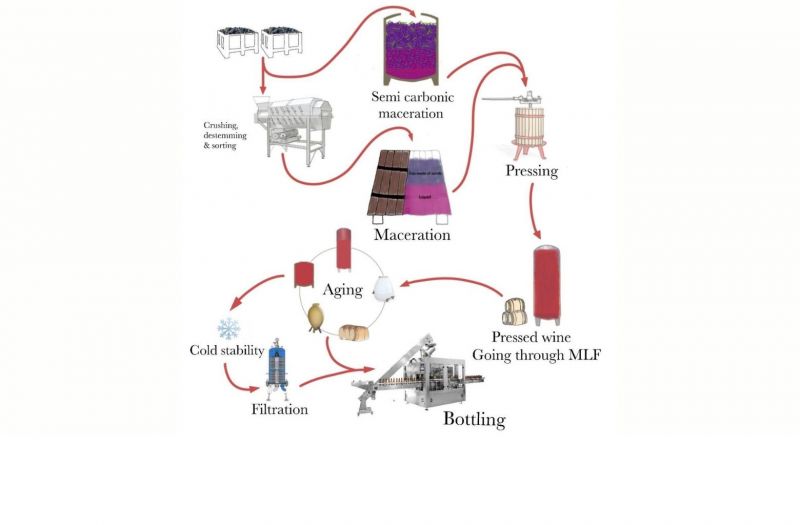
Sommelier Business joins with Nicolas Quillé, MW to create a short wine technical series to give on-trade professionals wine technical knowledge. In this article we write about Red winemaking for wine tasting.
The main difference between red and white winemaking is the maceration phase during which the polyphenols located in the grape skins (color and tannins) are extracted. The selection of the most suited berries before they go into the maceration vessel for several days is a critical operation. Traditionally this has favored hand picking of the fruit in the vineyard so that a trained person can select the appropriate clusters.
For high quality wines, the clusters may be sorted again by hand upon arrival at the winery. Technology has made dramatic progress offering machine sorting solutions that are more reliable than hand work such as picking machines with automatic sorting machine on board and berry optical sorting technology at the winery. As in white wine, it is not possible to taste the difference between the different picking methods with two exceptions. First is the ability to taste stem contact (black pepper, fresh wood) which always indicate hand picking (the stems stays on the plant when the grapes are machine picked). Additionally, some tasters affirm that optical sorting leads to a certain wine uniformity but, at this point, no one can affirm this with certainty.
Red grape skins are macerated with their juice to extract phenolics (color+ tannins). Color is water soluble and comes first, tannins are alcohol soluble and come later. The fermentation carbon dioxide pushes solids to the top of the vessel forming a solid layer called the “cap”. Phenolic extraction works like a tea bag in warm water and the main factors regulating it are temperature, time, mixing techniques and the presence of alcohol. More of each parameter will lead to more skin extraction; the objective is to reach the proper level for the desired style.
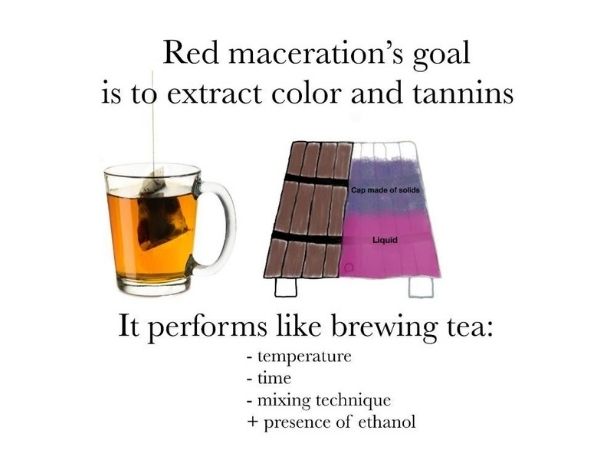
It is impossible to taste which technique is used but it is possible to suggest if the winemaker has a light touch or a heavy one. Light handed extraction results in palely colored wines with light astringency and body. This is done by low temperatures (18/25C), short skin contact (2-6 days) and gentle mixing. The heavier side will lead to deeply colored wines with high level of astringency and body. This is achieved by high temperatures (25/33C), long skin contact (6-15 days), and aggressive mixing. Once the desired phenolic profile is achieved the solids are removed through pressing. The handling of the solids, such as emptying the maceration vessel to the press, in the presence of alcohol must be done gently to avoid additional extraction.
Red wines aging is critical because their high phenolic content (tannin+color) evolves overtime: tannins become less astringent and red color turns orange. Young wines have vibrant colors, the deepest in their life, and assertive tannins. Right after pressing, wine phenolics are small, highly reactive and combine with one another. They quickly form polymers that are more stable and less astringent. Polymerization is encouraged by oxygen and when/how much oxygen is absorbed into the wine influences its phenolic profile.
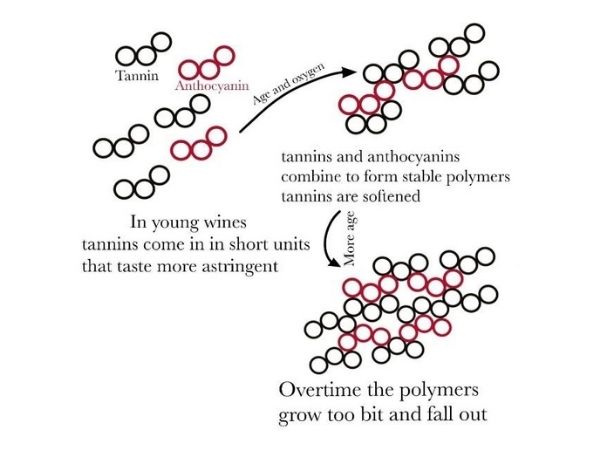
Red wine reactivity to oxygen diminishes as the wine ages. Young wines consume oxygen quickly and use the oxygen to create bounds between color (anthocyanins) and tannins. As wine ages, its need for oxygen diminishes to a point where it becomes fragile to it: color will change hue, large tannins drop and the remaining one feel astringent (we say that the tannins "dry" out"). This is why there is always a perfect time to package a wine to protect it before it starts falling apart.
Different aging vessels are used to meter the oxygen precisely. Sometimes, oxygen is introduced to inert vessels through microoxygenation machines. As usual a well-trained winemaker will know how to use these tools well to make them impossible to detect by taste.
Blending is a misunderstood process that allows a winemaker to achieve a desired wine style by combining different wine lots. All wines have some levels of blending if nothing else that they are a blend of different berries, clusters and parcels. It is useful to understand that while certain wine elements are averaged in blending (think of alcohol levels), many others are merely diluted below their threshold of perception which make them imperceptible by taste (think about aromatics). The winemaker will always make a more complex and layered wine by blending.
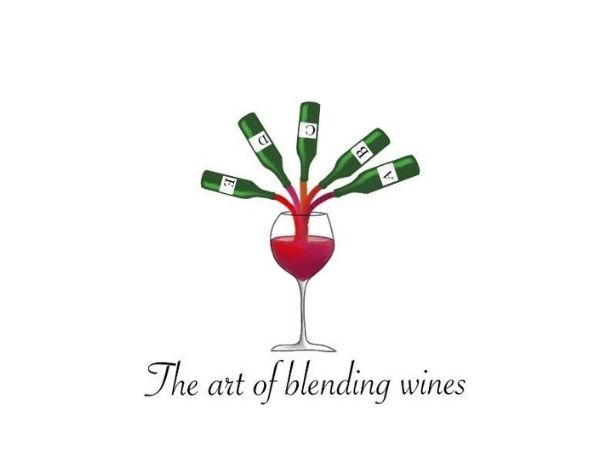
Blending is immensely important since small changes can be hugely impactful on the quality and style of the final wine. The blending can include different grape origins (part of the vineyard or different climate/regions), different varieties, different winemaking processes (an oaked and an unoaked fraction for example), or different vintages. Blending transforms wines in profound ways and it is regulated to ensure that the final result is reflective of any legal mention on the final package such as vintage, region of origin or variety(ies).
Red wine filtration is a hotly debated topic due to concerns that it may remove quality along with impurities. The most important feature of filters is that they exclude different particles based on their size. Yeasts require a filter that stop particles larger than 2 micron. Bacteria are smaller, and to exclude them a filter must stop particles larger than 0.45 micron – this size is called “sterile” filtration in winemaking although this is not sterile on a medical point of view. Phenolics, proteins, sugars, aromatics are much smaller than bacteria so the fear of having the filter stopping them seems unfounded. The problem comes from the absorption of compounds by the filtration material but once the filter is "neutralized" no further absorption occurs – the filtration debate continues.
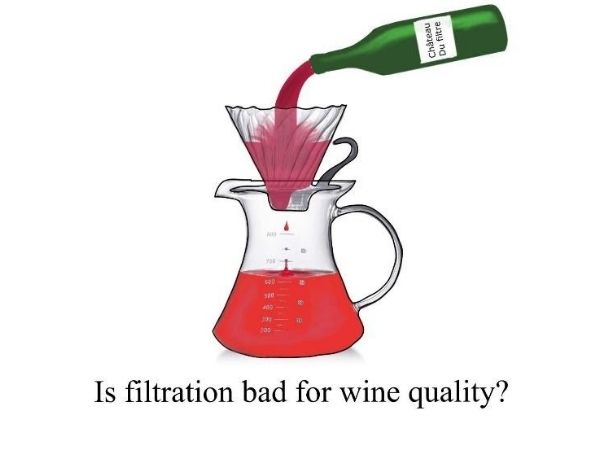
It is impossible to taste which filter was used, we can only make guesses about the use of filtration. For white wines, it is easy to suggest filtration if there is residual sugar or residual malic acid. For reds we can suspect no filtration if the wine has lees (increased body and dry extract and sometime haze) and if we detect Brettanomyces generated aromatics (barnyard). Careful on the last point because one cannot know if the Brett growth has occurred at the winery or in the bottle.
The bottling proceeds like any other wines and it is impossible to taste how or where the wine was bottled.
 Born in Lyon, France, from a family in the wine business for three generations. Nicolas has a Master degree in winemaking from the University of Dijon, Burgundy and a Master in sparkling winery management from the University of Reims, Champagne. Prior to coming to the United States, have worked in Burgundy and the Rhone Valley as a winemaker.
Born in Lyon, France, from a family in the wine business for three generations. Nicolas has a Master degree in winemaking from the University of Dijon, Burgundy and a Master in sparkling winery management from the University of Reims, Champagne. Prior to coming to the United States, have worked in Burgundy and the Rhone Valley as a winemaker.
He came to the United States in 1997 and worked for J. Lohr and The Hogue Cellars as a winemaker. During his time at Hogue Cellars, he went back to school and earned a MBA with honors from the University of Washington (first of class). He was the General Manager and Winemaker for Pacific Rim for 10 years where I lead our two wineries making 600,000 cases of wine. He recently took a position as the Chief Winemaking and Operations Officer for the Crimson Wine Group supervising six prestigious estate wineries in OR, WA and CA. In 2018 he became a Master of Wine formerly joining the prestigious Institute of Masters of Wine.